Lisa Dawn's Blog: The Princess Blog, page 42
October 10, 2021
Review: Beasts of Beauty
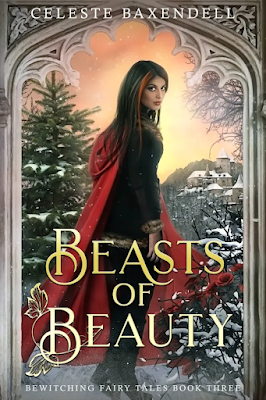
In this gender-bent retelling of "Beauty and the Beast" and "Little Red Riding Hood," Chasen takes on the roles of both Beauty and Red Riding Hood. When his sister tells him about a ferocious beast living in an enchanted forest, he attempts to hunt it to no avail. Then, a horrible villain, known only as The Scholar, kidnaps Chasen's entire family in exchange for the beast. Now more determined than ever, he dons an enchanted red cloak that was given to his family for protection and tries again. This time, he discovers that the beast is guarding the last of the fairies that their kingdom's enemies tried to wipe out in an enchanted castle, and he is held captive for discovering their secret. I love that this story managed to incorporate fairies even though neither of the fairy tales it was based on has any. There are far too few fairy tales that actually contain fairies. My favorite character in the book was Ilima, the outspoken faery princess who was best friends with the "beast," Aerona.
Though I had only read the first book in the Bewitching Fairy Tales, I was able to infer from the context of Beasts of Beauty that the second book in the series was a retelling of "Snow White" because Chasen is revealed early on to be the huntsman who spared Snow White's life before this book began. This book follows the tradition that most modern fairy tale series incorporate in which minor characters from other books becoming the protagonists in future adaptations. We already know a lot about Chasen from his actions in the "Snow White" story. He is a huntsman who is willing to follow an order as terrible as killing an innocent girl, but he has a strong enough conscience to resist committing such atrocities when faced with them directly. Though he should have learned from his past mistake, he makes a similar mistake in this book, barring any room for him to grow until the end. The mistake he makes here is even more heartwrenching and practically unforgivable.
Despite all of its merits, Chasen is by far the most frustrating character in this book. It took him far longer than it should have to learn that the young woman named Aerona who roamed the castle at night was actually the beast he was sent to hunt. Once he learns her story and begins to fall for her, he betrays her in the worst way possible and spends the final act of the book attempting to atone for his grave misdeed. The last few chapters of this book are extremely dark. They go places that most fairy tale adaptations would never dare attempt, and yet, it works because the story is so lengthy that it has plenty of time to create lighter moments with Ilima and Chasen's younger sister, Katja, to balance it out. Still, it is difficult to be prepared for the devastating blows that this book delivers. It is an incredibly sad story and never dances around that fact.
Beasts of Beauty is the darkest version of either "Beauty and the Beast" or "Little Red Riding Hood" that I have ever read. The gender-bending of both makes it very much its own unique story. It did not put me in a good mood, and the length made it difficult for me to get through in the amount of time I wanted. Yet, the writing and worldbuilding were top-notch and made the whole experience worthwhile in the end. I would recommend this book if you are in a macabre mood and have a lot of free time on your hands. It is not for the faint of heart.
October 3, 2021
Review: Diana The Musical
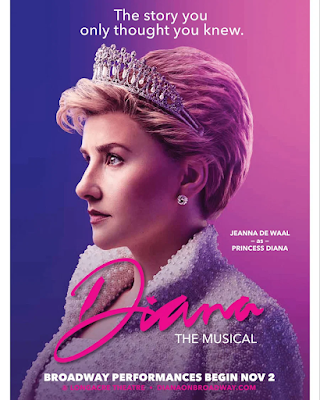
Upon watching this musical, I couldn't help but notice similarities to Bombshell, the faux Marilyn Monroe musical from the 2012 NBC series Smash. Though Bombshell was only shown in bits and pieces, both shows feature a real-life pop culture icon who was beloved by the public, had a difficult personal life, and died tragically young. One of the things I disliked about Bombshell is that the actress who plays Marilyn sings the opening song that introduces the audience to her world. Diana does the same thing, which diminishes the "fish out of water" feeling that they were trying to convey. All of the best musicals--Wicked, Sweeney Todd, Hamilton, etc.--begin with an ensemble cast of secondary characters introducing the audience to the setting and the way the protagonist is seen by the public before revealing the protagonist and how they don't quite fit into the world around them. It was a poor choice to give Diana the opening song because nobody is capable of talking about themselves from an objective perspective.
There was also nothing in this show that made me feel like I was getting to know the side of Diana that wasn't always in the spotlight. We barely see any of her personal life before Prince Charles proposes to her, and almost every subsequent song after the wedding is about the way she was seen by the media, which was represented by a large group of photographers in matching trenchcoats waving cameras around everywhere and singing upbeat melodies. Diana even sings a song about how everyone sees her as a "pretty pretty girl in a pretty pretty dress," but the song is presented far too literally and never gets reprised to reveal that there's more to her than that, which makes her come off as a bit of ditz when she has an affair in the second half of the show to fill the void in her heart that was left by her husband's love affair that continued throughout her entire marriage. She is presented as a wild child due to her love of dance and common upbringing, which doesn't quite fit with the warmth that she gave to the public, but I suppose that was the writers' way of trying to show us the "real" Diana.
There weren't any particularly memorable songs in this show. Most of them were extremely repetitive and paused the story rather than driving it forward. I learned a lot more about Diana's life from her sequences in The Crown than I did from this show, which seemed to draw most of its plot points from tabloid articles that came out during that time period. I would have liked to hear more heartfelt songs from Diana about how hurt she was by Prince Charles's love affair with Camilla Parker Bowles and the way she wanted the public to see her. Even though Bombshell was never made into a full musical, they still managed to portray these themes better with songs like "Never Give All the Heart," which is about how Marilyn Monroe only felt loved on a superficial level and that all she wanted was for someone to love her for who she really was. This musical implied the same about Diana but never drove the point home with a truly heartfelt song like that one. The best song in this show is the final number, "If," which concludes with Diana's tragic death, but even that didn't pack as strong of a punch as its Bombshell counterpart, "Don't Forget Me."
Overall, Diana The Musical is a generic Broadway show that covers only the most basic aspects of the life and times of Princess Diana. It might be good for someone who knows absolutely nothing about the people's princess and wanted a brief introduction to her story. However, if you are looking for a deeper exploration of her personal life, I would skip around to the corresponding scenes from the fifth season of The Crown. It's kind of funny how a musical that was never completed can express the themes that Diana was trying to portray on a much deeper level. If nothing else, this show gave me a better appreciation of the songs from Smash and made me realize how similar of a life Princess Diana shared with Marilyn Monroe.
September 26, 2021
Review: The Dark King and the Eternal Dance
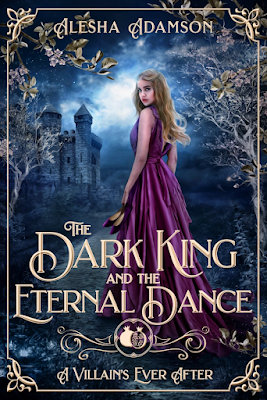
Most adaptations of "The Twelve Dancing Princesses" focus on one or two of the sisters because twelve heroines are a lot to keep track of. This book wisely incorporates that method as well and begins with an emphasis on Faelynn, the eldest sister, before switching its attention to Rayna, who sees herself as a middle child despite being the third eldest. When their kingdom falls into a crisis, the princesses' father enlists in the aid of a powerful king named Drake, who agrees to save their land in exchange for Faelynn's hand in marriage. Faelynn's father must make a difficult decision that is similar to the video game Yes, Your Grace, in which a king must decide whether to trade his daughter's hand in marriage to save his kingdom. In this story, he decides on a compromise to allow the dark king to marry whichever one of his daughters is willing. However, Drake still has eyes only for Faelynn, which forces Rayna to take matters into her own hands to preserve the happiness of her family and her kingdom.
Drake is just as amusing as he is frustrating. He has an incredible amount of magic, but he also shows signs of autism as he is completely oblivious to the thoughts and feelings of those around him. When Faelynn tells him that she doesn't want to marry someone she barely knows, his solution is to force her and her sisters to attend a ball every week at midnight and uses magic to ensure that none of them can tell anyone about it. For months, he watches the sisters travel through the portal to the enchanted forest against their will and never notices the least bit of discomfort from any of them, least of all Faelynn, with whom he regularly dances. It isn't until Rayna gets in his face and tells him that Faelynn is already in love with someone else and that several of their sisters hate coming to the dance every week that he even suspects something is amiss, but even then, he doubts her words. For such a misunderstood villain, he comes off as quite dense and difficult to relate to at times.
Princess Rayna is the one who makes the book worth reading. She blends into the background for the first half of the story, but once she sneaks away while the rest of her sisters return home, things start to get interesting. Her brutal honesty and bravery are as charming as they are reckless. The second half of the book feels like a retelling of "Beauty and the Beast" as Rayna explores Drake's mysterious castle and enchanted kingdom while peeling away the layers of his past trauma that led to his reputation as the dark king. It is a delight to see Drake's attention gradually shift from Faelynn to Rayna as he becomes more grounded in reality. Not only does she help him see the truth behind her own family's situation, but she also helps him become a better leader for his own kingdom. Rayna is responsible for putting many elements of the original fairy tale into play, but she doesn't come off as too perfect because she also makes mistakes by sneaking away without considering the consequences, a trait that is too often abandoned in other adaptations of this classic fairy tale.
The Dark King and the Eternal Dance is a charming adaptation of "The Twelve Dancing Princesses" with a sweet romantic twist. I thought it was the right choice to only focus on two of the princesses for a novel of this length. The initial spotlight on Faelynn gave Rayna an opportunity to rise up as an underdog during the second half of the book. I also liked how both princesses took the time to get to know their prospective love interests instead of simply marrying the man who solved the mystery of what happened to them at night like in the original fairy tale. It was also a nice touch that some of the younger princesses enjoyed staying up late and attending a magical ball as that seems more believable when so many other adaptations make it sound like a horrific nightmare. I would recommend this book to anyone who is tired of those darker adaptations of this beloved fairy tale and wants to read a more heartwarming version of it.
September 21, 2021
Review: Time Princess - White Snake Visual Novel
There was a heightened level of anticipation for the latest visual novel in the Time Princess phone game. This was the longest the app has gone without a new story in quite some time, and I was informed by some fellow social media players that the Chinese Legend of the White Snake is incredibly popular in Asia. Although I was not familiar with it before reading this visual novel, the popular myth has had several recent film and television adaptations. Upon first glance, I was worried that this story would just be a copy of Tang Dynasty Hunter, another recent visual novel from this app, but after playing both, I realized that the similarities were purely superficial. While both stories take place in China and follow their mythology of demons as objects or animals that can transform into humans, Tang Dynasty Hunter follows a human who hunts demons, and White Snake features a demon in disguise as a human.
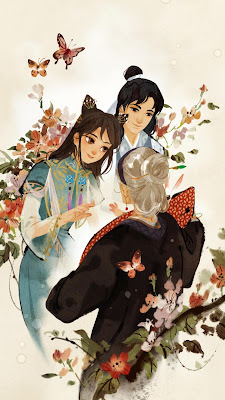
White Snake tells the story of Suzhen, a white snake demon who spends her time on Earth as a human doctor working in an apothecary with her sister, Xiaoqing, a green snake demon. The two sisters desire to do good deeds and raise their status to that of the immortals, which are the Chinese equivalent of mythological gods and goddesses. Once they set up shop, they heal many patients and earn renown among the village, but soon the rumors spread about their true identities, which diverts their usual customers to Xu Xian, a competing doctor who has nothing but respect for Suzhen and her work. Though the legend of the White Snake is widely regarded as a romance in modern times, this version of the story did not appeal much to my romantic side. For most of the visual novel, Suzhen and Xu Xian treat each other more as colleagues than as lovers. In fact, if the player selects Xiaoqing's route instead of Xu Xian's in the second chapter, the story has virtually no romance at all. Xiaoqing was not a very appealing character to me. Though she cared deeply about protecting Suzhen she was impulsive and had an awful temper, similar to Ida from Princess Sissi.
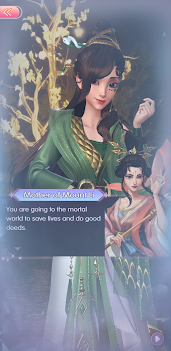
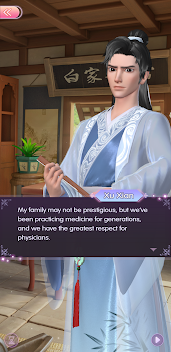
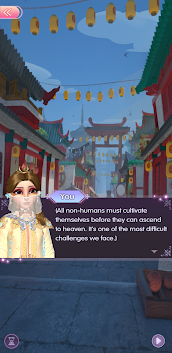
This story is longer and more complete than other recent visual novels from Time Princess including Tang Dynasty Hunter and Princess Sissi. It allows ample time to explore the mortal and immortal realms, although it glazes over any technical details about how Suzhen and Xiaoqing heal their patients, so I didn't learn much about their professions, despite being a major focus of the story. White Snake gave me a better understanding and appreciation of Chinese mythology and how anyone could be a demon even if they look human and regardless of their intentions. The senseless racism and violence toward demons in is reminiscent of the 1692 Salem Witch Trials and how women were tragically killed over suspicion of having magical powers, regardless of whether they used those powers for good or evil. In this world, demons have the capacity do a great deal of good, but people like the wicked monk, Fahai, are determined to expose them and lock them away just because they are not natural-born humans.
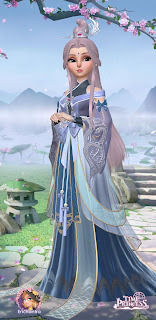
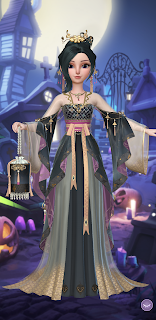
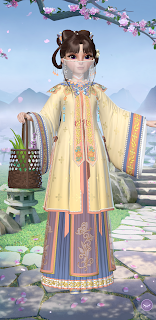
I was a little worried that the costumes in this story would be too similar to the ones in Tang Dynasty Hunter since both take place in ancient China, but I was pleasantly surprised to find that they were not only different, but far more unique and creative. Instead of traditional Chinese robes, Suzhen has some lovely flowing dresses, many of which are accented with clever snake-like imagery that hint toward her true nature. I especially loved her blue immortal gown, which was covered with layers of ribbons, lace, and bows that flow like water, and topped off with gorgeous long lavender hair pinned with a silver jewel-encrusted hairpin. My second favorite outfit is her slinky black dress that is decorated with golden snake scales and playful ribbons and tassels. Many of the jewelry pieces for these sets are also snake-shaped or snake-inspired. The attention to detail that the designers placed on the theming in this book makes me even more eager to see what they would do with a mermaid story.
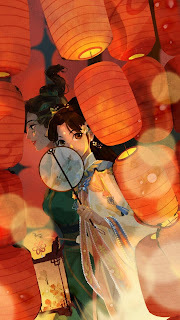
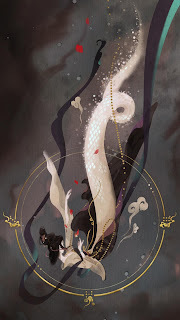
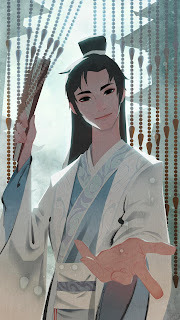
Overall, this is one of the better stories in Time Princess in terms of worldbuilding and gameplay. The decisions were challenging and less straightforward than some of the other stories. I genuinely wasn't sure which choices would give me a "good" or "bad" ending. In terms of romantic appeal, however, this story is one of the most lacking. There is only one potential love interest, and the romance between them is forced unnecessary since the story, at least in this incarnation, is more about racism than true love overcoming odds. I also wish this visual novel contained more original artwork since the few images that it has are incredibly beautiful and stylized. I also love the creativity that went into the snake accents on all the outfits. If you want to learn about Chinese mythology through Time Princess, I would definitely recommend White Snake over Tang Dynasty Hunter. However, if you are looking for something with more romance, I would lean in the direction of Romy and Julius or Little Women.
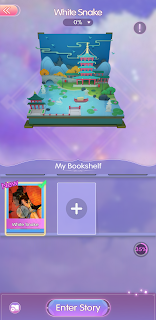
September 19, 2021
Review: The Thorn Princess
After taking a brief hiatus from the weirdly specific genre of girls from the real world who find out they're actually faery princesses, I decided to take a risk and dive into The Thorn Princess by Bekah Harris. This wasn't the worst book I've read with this plot, but it had all the usual suspects of paranormal YA fantasy romance novels. There's the average down-on-her-luck teen protagonist who's so unremarkable that any reader can place themselves in her shoes, the quirky best friend, and the oh-so-sexy supernatural love interest who comes into her life like a whirlwind to whisk her away to a fantasy land. Despite all of these stereotypes, the story was enjoyable enough for what it was. There were no major plotholes, and the characters remained consistent throughout. However, it was so similar to other books in this genre that I felt no motivation to read more of the series once I completed it.
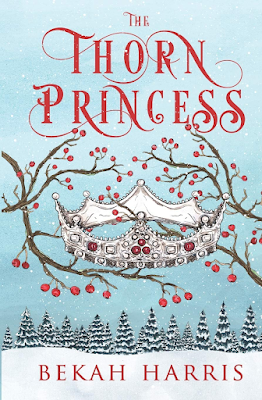
The Thorn Princess centers around Ivy Hawthorne, the lost heir to the fae realm, but it starts out from the perspective of Bear, a royal guard sent to Earth on a mission to recover her. This was a refreshing change of pace since most stories like this usually have a mystery guy appear out of nowhere who draws in the main character with the allure of the unknown. Though that was still the case here, the book gives us a moment to appreciate the struggles that male love interests from other worlds must encounter when they have to pretend to fit in out with our earthly customs and stave off thirsty popular girls who think they're entitled to them. The book skips over all the boarding schools Bear attended on his search for Ivy and goes straight to the part where he enrolls at her school and falls in love with her instantly. Unfortunately, a book about a fae soldier pretending to fit in at a number of boarding schools on Earth could have been a lot more interesting than the story that this book tells.
Once Bear finds Ivy, The Thorn Princess quickly dissolves into "been there, done that" territory. Ivy and her best friend, Jules, are entranced by this mysterious handsome boy who showed up out of nowhere at their drab boarding school that takes an immediate liking to Ivy even though she has done nothing to attract his attention. This is where the book reaches the sketchy territory that most YA paranormal romance novels seem to have. Bear borderline stalks Ivy and acts like he's her boyfriend the moment he meets her, and neither Ivy nor Jules seems to take any issue with this. In fact, they are both excited at the prospect of Ivy having her first boyfriend despite knowing absolutely nothing about him except that he seems to be keeping a truckload of secrets. Even when Bear tells Ivy that he has come to take her away to the fae realm where she will be forced to marry a stranger and her life will be constantly threatened, she goes with him with hardly a second thought and doesn't even tell Jules she's leaving her forever.
As much as I wanted to be impressed by this book's depiction of the fae court, this one left me underwhelmed. I guess I've read and watched so many other faery stories that I've been spoiled. Bekah Harris relies heavily on pre-conceived notions of fae mythology like the Seelie and Unseelie courts and explains Ivy's unique circumstances as being a changeling, something that was also covered recently in Fate: The Winx Saga. It was intriguing that the real daughter of Ivy's human parents grew up in the Seelie court as a faery princess before finding out that her entire life was a lie, but this book did not spend enough time focusing on that to make her interesting. Just as I thought Bear's life story would have made for a more original book, I would also love to read about Violet's life and what it was like to grow up among the fae court. This may be explained in some of the sequels, but it seems more likely that Violet will become a jealous villain that Ivy will need to defeat.
I think this is a great starter book for anyone who is new to fae mythology or is a huge fan of the "lost princess" trope. More advanced readers who are already familiar with fae mythology or paranormal romance won't get much out of the first book in the Iron Crown Faerie Tales series. Maybe it gets better as it goes on, but I had little motivation to read more. This book could have had a lot of potential if it took the risk to dive into Bear's acclimation to the human realm or Violet's life as a fae princess before it was ripped away from her, but instead, it chose to focus on the bland Ivy Hawthorne, who gets magical powers, a hot love interest, and becomes a princess overnight despite doing nothing to deserve any of it.
September 15, 2021
Why Are Princesses Always Targets?
This is a sort of follow-up to my post about "How Princesses Represent Hope." Being a princess in a fantasy world often means having a neon target on your head. I do not want to use the word "victim" because that is separate from being a target. Modern princesses are more capable than ever of defending themselves, something that has changed over time as a direct response to the "Damsel in Distress" stigma. Yet, the fact that princesses can defend themselves from threats has not changed the fact that they are constantly being threatened. Even in stories with male leads, it is usually the princess or female love interest who is threatened, not the hero himself. Take for example Megara's binding servitude to Hades in Hercules or Frollo's relentless obsession with Esmeralda in The Hunchback of Notre Dame. There is a reason that princesses are coveted by heroes and villains alike.
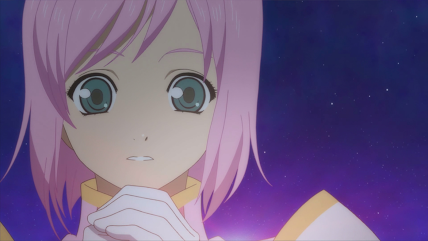
I was inspired to write this post after being introduced to yet another video game princess, Estellise, from Tales of Vesperia. Aside from being kind, lovely, and innocent, Estelle is quickly targeted by the game's villain for her unique magical abilities within that world. Being targeted like this is an intrinsic and unfortunate aspect of being a fictional princess, especially in video games. Just look at how Kairi got screwed over in the last Kingdom Hearts game. The obvious reason for this is that there's no story with no conflict, but it goes deeper than that. So many stories with male leads are about protecting or avenging a woman, such as Sweeney Todd, where the troubled antihero commits heinous acts in the name of avenging his wife and daughter. Meanwhile, stories with female leads, especially princesses, are usually about defending or seeking protection for themselves. While this may read as sexism through a superficial lens, it is actually a tribute to how powerful and desirable these future female monarchs are.
One reason that princesses are always targeted is that they are in a position of power, so those who want to take that power for themselves would need to get them out of the way first. This has always been the case when it comes to royalty in both real-life history and fiction, with the most famous example being Shakespeare's Hamlet. Yet, there's more to it than that. Though Snow White and Jasmine were targeted over jealousy of their positions of power, princesses who did not start out in such positions like Cinderella or Belle were sought after for different reasons. After all, being a modern princess does not require you to be the daughter of a king or queen. Instead, "princess" has become synonymous with any ideal woman of her time. Such a wondrous level of kindness, purity, and beauty will inevitably attract all sorts of attention both from those who wish to protect her and those who wish to do her harm.
The targeting of pure-hearted princesses is also a metaphor for loss of childhood innocence. Most of us don't experience anything as traumatic as a villain who curses us to fall into a death-like sleep before we turn 16, and thank goodness for that! Some things should only be in stories. Yet, as we get older, we experience smaller disappointments that make us more cynical about the world around us. Over time, those experiences transform us into healthy adults. Though we are still able to use our imaginations and enjoy a good story, the magic of it becomes more delicate or artificial. Fairy tale princesses are the epitome of that magic, so the jealous villains who come after them want to destroy that purity and turn them into boring ordinary adults. No one wants to lose their sense of innocence, which is why the happy ending usually involves the princess finding a place of love and protection where she can never be tainted by the wicked grasp of reality again.
The most obvious reason that princesses are always targeted by ne'er-do-wells is that it creates instant sympathy for them. While it shouldn't be used as a substitute for character development, you can't help but care about a character who is kidnapped or attacked despite doing nothing wrong and being kind to everyone they know. As far as I'm concerned, princesses are lovable based on their kind gentle nature alone, but it is harder for most people to relate to a conventionally beautiful maiden who has everything she could possibly want than someone with problems that need to be overcome. Princesses tend to be so beautiful on the inside already that there is no need to give them an internal conflict, so their demons are almost always be external.
September 12, 2021
Review: Enspelled
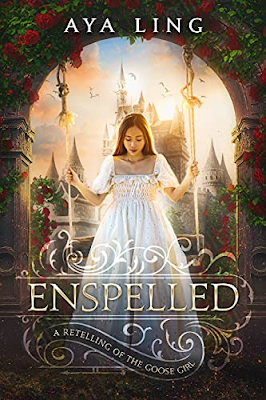
Enspelled begins with an orphan girl from Japan named Sana who reads a manga version of "The Goose Girl" fairy tale shortly before she is killed by a truck and wakes up in the body of Princess Rosemary, who is trapped in the body of Anne. Still with me? Those who are familiar with the fairy tale would have an easier time wrapping their minds around the double body-switching than those who are not. Anne is the villain of "The Goose Girl" who impersonates the princess in the original fairy tale. In this version, she does so with a magic spell from a witch that causes them to switch bodies, but her consciousness is replaced with Sana's shortly after the switch. Though Sana is aware that she isn't really Princess Rosemary, she must pretend to be until she finds a way for them to switch back so she can avoid being executed for Anne's act of treachery. It seems a bit convoluted to try to summarize, but it makes perfect sense in the context of the book, especially because it's told from Sana's perspective.
"The Goose Girl" is quickly becoming one of my favorite fairy tales after reading so many wonderful adaptations of it. However, this is the first time I've ever seen it told quite like this. Sana must tread carefully when she finds herself in the body of the princess for fear that she will be discovered and punished for Anne's crimes. She rouses suspicion from both Walter, a knight she has a crush on, and Falada, Princess Rosemary's magical talking horse. Even when she is ready to admit who she is, the spell prevents her from telling anyone the truth by putting her in debilitating pain. Sana is able to make an ally of Princess Rosemary by expressing remorse for Anne's foul deeds and defending her from a pervert who was harassing her. She also believes she has an ally in the sharp-witted Princess Aria, the sister of Prince Alistair, Rosemary's betrothed, but Sana struggles to shed the role of the villain when she learns that the witch who cast the body-switching spell expects her to kill Alistair.
This story was filled with twists and turns and made for a quick fun read. The ending went on a little longer than I expected, which was both a good thing and a bad thing. I didn't think it was necessary to come up with a logical explanation for everything that happened to Sana because that made the events of the story feel too forced. I had a similar issue with Aya's other series, Unfinished Fairy Tales. Sometimes it's better to just accept that not everything has a logical explanation. I liked how certain elements of Japanese culture were tacked onto the end of the book, but I would have liked to see them referenced earlier since the epilog didn't seem entirely necessary. However, these are all minor complaints when the rest of the story was so fun and exciting.
If you are looking for a quick escape into a fairy tale world, I can't recommend this book enough. It was a clever twist on the izekai anime genre and a new take on "The Goose Girl." I love stories that combine magic with the modern world, and this one really hit the mark for me. If you've already read Aya Ling's Unfinished Fairy Tales series, Enspelled is a quick read that shares many of the same elements and themes. If you haven't, you should definitely check it out before or after reading this one. I hope to read more izekai-inspired books from Aya Ling in the future.
September 5, 2021
Review: The Desert Princess
Melanie Cellier is the author who introduced me to the wide world of indie authors with her first fairy tale retelling, The Princess Companion. Since then, she has written roughly a dozen more adaptations of classic fairy tales set in the same world of fairy godmothers and true love. The most recent of these is The Desert Princess. After reading so many books from the world of the Four Kingdoms already, it's a little difficult to experience a new book from these series that feels fresh and exciting. The prospect of a gender-bent "Aladdin" retelling is nothing new, but I was eager to see Melanie's unique take on it. However, this adaptation did not add any new developments to her many other fairy tale retellings set in this world. If you have never read another Melanie Cellier book before, this is a good introduction to her storytelling style.
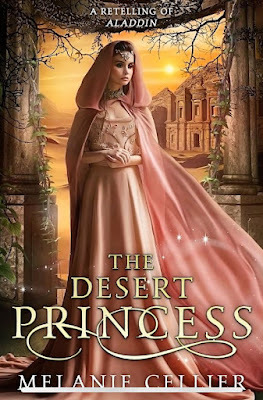
It has become a predictable trope for all of Melanie Cellier's fairy tale books to begin with a caravan raid that sends the main character somewhere far from her home and forces her to unmask the ne'er-do-well behind the devilish deeds, especially in the newest Return to the Four Kingdoms series. Oftentimes, the princess or princess-to-be has little interest in uncovering a royal conspiracy and gets hurled into the middle of it by sheer misfortune. That is not the case for The Desert Princess. Cassie is determined from the very beginning to become an intelligencer for Aurora, the codename for the spymaster princess from an earlier book, The Princess Game. A noble maiden who dreams of becoming a spy is an interesting prospect on its own, but in this setting, which is overloaded with princesses of espionage, it's a little too on the nose to have a protagonist who is desperate to cover a conspiracy and then immediately fall into one.
I was hoping that Cassie would spend half the book looking for some sort of problem to solve, only to realize that trouble doesn't find you just because you're looking for it, but that was not the case. Instead, she learns that the bandits she encountered pose a threat to her kingdom, hides in the back of their wagon, and travels to a faraway land that she never knew existed. She meets a group of orphans there who turn out to be the genies in this version of "Aladdin," but in truth, they are ordinary children who are cursed by a magical ring. As much as I like that Melanie incorporated both the ring and the lamp from the fairy tale into this version, the mysterious and majestic nature of the genie character is all by eliminated in this adaptation. The orphans are cared for by a young man named Zaid who Cassie falls for immediately, and then there is an unnecessary time jump of a little over a year before the story finally gets around to truly retelling "Aladdin."
The book takes a while to pick up, and I honestly didn't find the first half very interesting since it felt like every other Four Kingdoms book without any of the aspects that made them unique. When Cassie discovers the Cave of Wonders (though it wasn't called that here) in the second half of the book, the story finally starts to get interesting. The backstory behind the enchanted ring and lamp could easily be a prequel novel and adds a healthy amount of worldbuilding to this new desert kingdom. Once she discovers the lamp, Cassie undergoes a magical princess transformation to take down the wicked vizier, and there are a few more twists that I won't spoil in this review. I'm not sure why it was necessary for Cassie to be in this foreign kingdom for over a year before she found what she was looking for. The book would have been better if it started closer to the second half of the story.
Overall, The Desert Princess is quite possibly the most generic Four Kingdoms book of the three series set in this world. It wastes no time foreshadowing the protagonist's ability to uncover conspiracies and driving her into one headfirst. It's a decent enough book as a standalone but has nothing new to offer this series as a whole. I don't think that's entirely Melanie Cellier's fault, though, as she has already written so many other fairy tale retellings in this world that she was bound to run out of ideas eventually. This book serves as a good introduction to her Four Kingdoms series if you don't want to start all the way at the beginning with The Princess Companion, but if you are looking for an inspired "Aladdin" retelling that adds depth and intrigue to the lore of the djinn, you would best look elsewhere.
September 3, 2021
Review: Cinderella (Amazon Prime 2021)
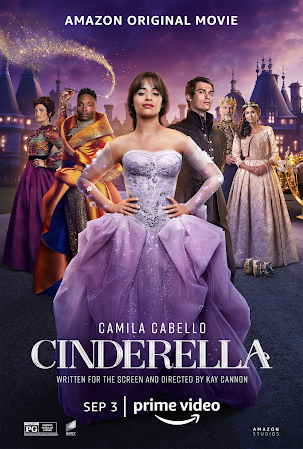
Cinderella was filmed prior to the pandemic when the world was a more optimistic place, and boy, does it show. While it may incorporate some modern themes and character archetypes, the overall tone is reminiscent of a light-hearted romantic comedy from the '90s rather than the types of gritty nostalgic reimagining we see from modern-day Hollywood. The hodgepodge of anachronistic costumes, music, and sets have no intention of making sense, and that's perfectly fine as long as you don't go in expecting a historical drama. Not every movie needs to be taken seriously. Instead, Cinderella provides an opportunity to take your mind off your problems for a couple of hours. Everyone in the cast looked like they were having a ball making it (pun intended) regardless of how little sense it makes if you think about it too hard.
Camila Cabello shines in her role as Ella, an aspiring fashion designer reminiscent of another film that came out earlier this year. Her hopes and dreams revolve around her aspiration to sell dresses to kingdoms far and wide. Falling in love was never something that she factored into that future. When she learns that the handsome young man who bought her dress in the marketplace was actually the crown prince, Robert, she respectfully declines his offer of marriage, thinking it would interfere with a job offer she received from a powerful queen she met at the ball. The movie teaches girls that they have the right to choose what they want to do with their lives and to never let anyone decide for them, which is an important and respectable theme. I also liked that Ella was not tough in the sense of modern Disney Princess archetypes and that she was interested in a career that could be considered traditionally feminine even though she was ahead of her time.
My favorite part of this movie is when Cinderella shared her romantic dance with the prince at the ball. Though I have no strong feelings toward the song "Perfect" by Ed Sheeran that they danced to, the lighting, acting, choreography, and cinematography worked together beautifully to recreate this iconic fairytale moment. Cinderella's dress looked amazing in this scene with its crystal accents that reflected rainbows into the camera's foreground, though I have mixed feelings about it during other parts. The corset seemed too stiff and big in the chest for some of the modern dancing she did with her gender-neutral godmother. One thing that I really liked about the godmother in this version is that they came from an act of kindness that Cinderella performed near the beginning of the film, which made their appearance more meaningful.
I think it's unfortunate that this movie is getting a lot of hate from critics due to the lack of original music and its stubborn refusal to take itself seriously. We can all use a chance to escape our troubled lives for a while and enter a world of pure fun where anything is possible. Sure, it's not Rodgers and Hammerstein, but it also isn't the disaster that Ella Enchanted turned out to be. It's a perfectly fine non-Disney fairy tale adaptation that gave its actors an opportunity to have a lot of fun before the world turned into a not-so-fun place. Cinderella makes no pretenses about what it is in its marketing, so if it doesn't look like it would appeal to you, don't watch it. However, if you're looking for some mindless fun that doesn't require heavy thought, then by all means, check it out on Amazon Prime today.
August 29, 2021
Review: Hearts at Dawn
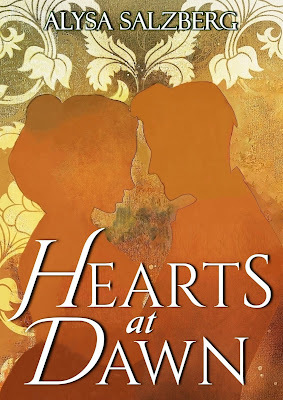
One thing that makes Hearts at Dawn stand out from other versions of "Beauty and the Beast" is that it is told from the perspective of the enchantress, though she is not the main focus of the book. Like Maleficent, the enchantress in this story cursed a baby over a squabble she had with his parents that she came to regret later in life. Her curse caused a young man from New York named Orin Rush to transform into a beast-like creature every night. Orin's mother, who was also magical, cast a protection spell over him that prevented the enchantress from getting close to him and telling him how to break the spell. The enchantress watches over Orin like a guardian angel, doing her best to protect him in what few ways she can without being able to cross his mother's magical barrier. The unique choice of narrator and the fact that this adaptation focuses more on the "beast" than the "beauty" character make it particularly unique.
The main story begins when Orin travels to Paris with his brother, Joseph, to search for a cure for his nightly curse. Having a friendly and outspoken brother at his side makes Orin feel less like the aloof prince from the fairy tale and more like a real person. Their relationship was a major highlight of this book. Orin finds lodgings in Paris next door to a photographer named Claire Turin, who bonds with him over their shared interest in the arts. Like in most love stories, the two are reluctant to admit their feelings for each other due to personal hangups. Claire is afraid that being tied down in marriage would restrict her artistic freedom while Orin believes that no one would be capable of loving him if they saw the monster he turned into at night. Unfortunately for them, everyone else in their lives is determined to bring them together despite their stubbornness.
As original as this story was, there were several elements that impeded the pacing and excitement it could have had. I'm not a fan of historical novels or movies in general because they tend to feel slow (kind of like real life), and this one was no exception. The fact that Orin only turns into a monster at night makes it easy for him to blend into society and live a pretty normal life. Even after Clarie learns his secret, she never has to deal with his monster form directly. The most intense moment of the story is a scene in which Orin rescues Claire's cat, which I found disappointing. I would have preferred to see him rescue Claire, herself, something that happens in so many other versions of "Beauty and the Beast" and could have been especially suspenseful in the war setting. Still, the slow pacing of the book allows the author an opportunity to go into stunning detail about the sights and sounds of Paris during the Franco-Prussian War, something that she is clearly passionate about.
Overall, Hearts at Dawn is a rich historical novel and a wholly unique take on "Beauty and the Beast." The setting and characters are brought to life with an impeccable level of detail, and the book is a sensory experience for anyone interested in French history. If you are looking for something packed with action, adventure, and magic, this is not the book for you. Instead, it is a slow and relaxing love story that takes the time to appreciate every aspect of the world around itself just as an aspiring photographer would. Hearts of Dawn is having a Kindle sale right now, so if it sounds like something that would interest you, be sure to grab it before the price goes back up!



